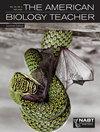从一开始
IF 0.3
4区 教育学
Q4 BIOLOGY
引用次数: 0
摘要
有大量的进化证据,但生物学家一直在寻找更多的证据。与任何对过去的钻研一样,这并不容易做到。时间会抹去证据。多年来,从19世纪的阿尔塔米拉到20世纪90年代的肖韦,人们发现了许多史前洞穴艺术的奇妙遗址。但是专家们仍然没有提出一个合理的解释为什么这种艺术被创造出来(柯蒂斯,2006)。问题仍然存在:这些图像是为了庆祝生命的多样性,还是为未来的狩猎带来祝福?正是这些问题使历史既令人沮丧又令人着迷,而历史的任何部分都不会比研究地球上的早期生命更令人沮丧,也更令人着迷。如果说要拼凑出2万或3万年前洞穴里发生的事情都很困难,那么要弄清楚30亿或40亿年前发生的事情就困难得多了。令人惊奇的是,这并非完全不可能。生物学家、化学家、物理学家和地质学家共同努力,提出了一些关于地球早期生命的合理设想。当然,他们的一些解释仍然存在很多争议,但自20世纪50年代斯坦利·米勒和哈罗德·尤里试图重建早期地球的化学环境的实验以来,也取得了很大进展。在这篇专栏文章中,我想探讨几条证据线索,这些证据至少能让我们大致了解早期生命是什么样的。考虑到我们许多人的祖先只能追溯到两三代,这还不错。物理学家和地质学家一致认为地球大约有45 - 46亿年的历史。还有……本文章由计算机程序翻译,如有差异,请以英文原文为准。
From the Beginning
There's a tremendous amount of evidence for evolution, but biologists are always looking for more. As with any delving into the past, this isn't easy to do. Time erases evidence. A number of wonderful sites of prehistoric cave art have been found over the years, from Altamira in the 19th century to Chauvet in the 1990s. But the experts still haven't come up with a plausible explanation for why this art was created (Curtis, 2006). Questions still remain: were these images meant to celebrate the diversity of life or to bring blessing upon a future hunt? Such questions are what make history both a frustrating and a fascinating endeavor, and no part of history is more frustrating or fascinating than investigating early life on earth. If it's hard to piece together what was going on in caves 20 or 30 thousand years ago, it's not surprising that figuring out what occurred 3 or 4 billion years ago would be much more difficult. The amazing thing is that it isn't totally impossible. Biologists, chemists, physicists, and geologists have worked together to come up with some plausible scenarios for the early years of life on earth. Sure, there's still much controversy about some of their explanations, but there has also been a lot of progress since the experiments by Stanley Miller and Harold Urey in the 1950s in which they attempted to recreate the chemical environment of the early earth. In this column, I want to explore several lines of evidence that together give us at least a sketchy view of what early life was like. That's not bad, considering that many of us can't trace our ancestors back more than two or three generations. Physicists and geologists agree that the earth is about 4.5——4.6 billion years old. There is also …
求助全文
通过发布文献求助,成功后即可免费获取论文全文。
去求助
来源期刊

American Biology Teacher
BIOLOGY-EDUCATION, SCIENTIFIC DISCIPLINES
CiteScore
0.80
自引率
20.00%
发文量
108
期刊介绍:
The American Biology Teacher is an award winning and peer-refereed professional journal for K-16 biology teachers. Articles include topics such as modern biology content, biology teaching strategies for both the classroom and laboratory, field activities, and a wide range of assistance for application and professional development. Each issue features reviews of books, classroom technology products, and "Biology Today." Published 9 times a year, the journal also covers the social and ethical implications of biology and ways to incorporate such concerns into instructional programs.
 求助内容:
求助内容: 应助结果提醒方式:
应助结果提醒方式:


